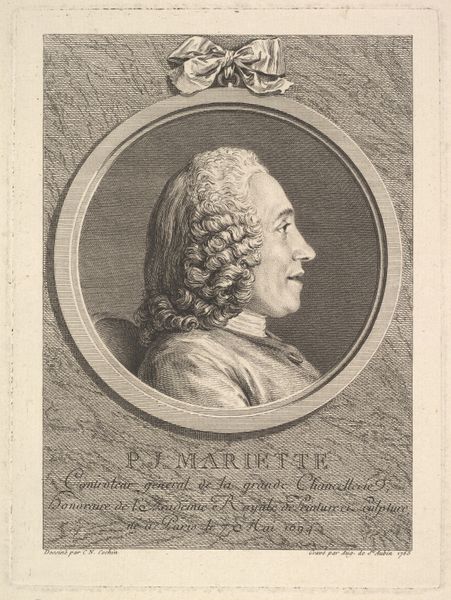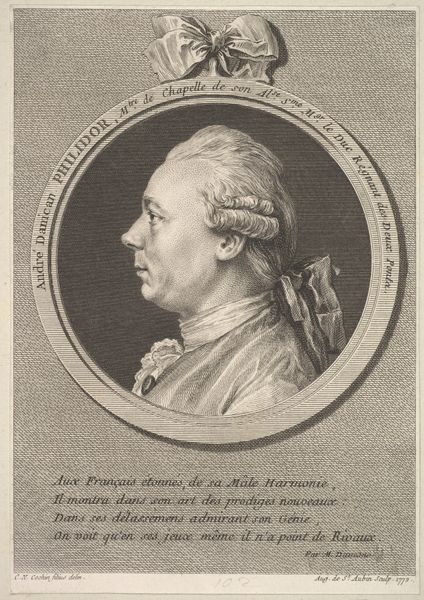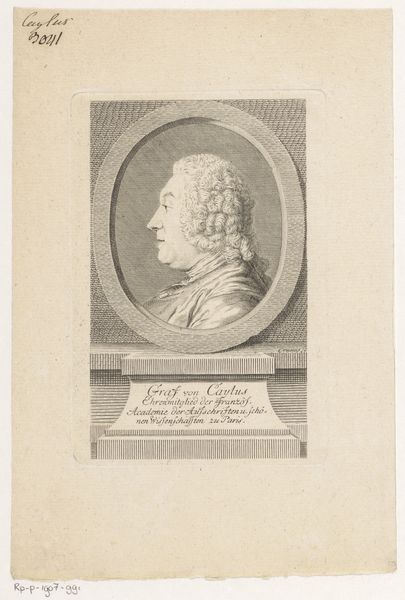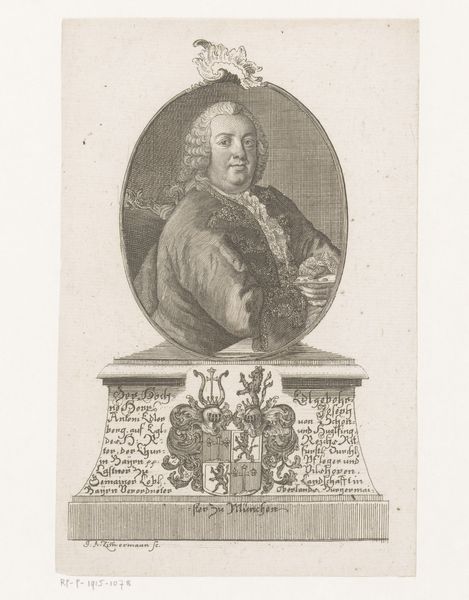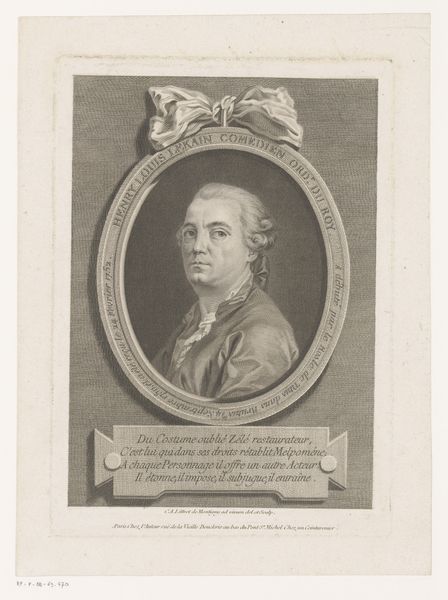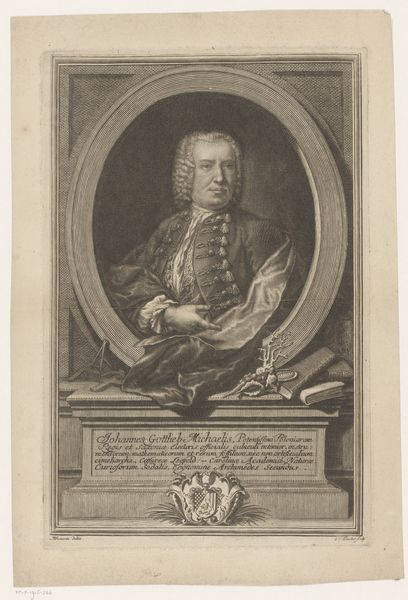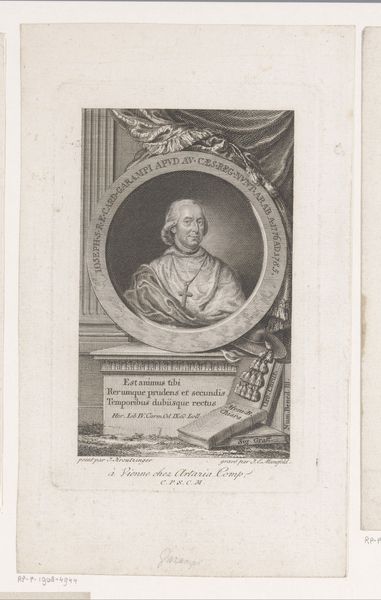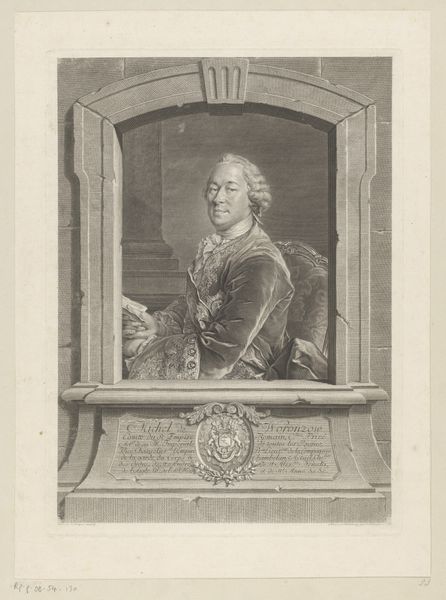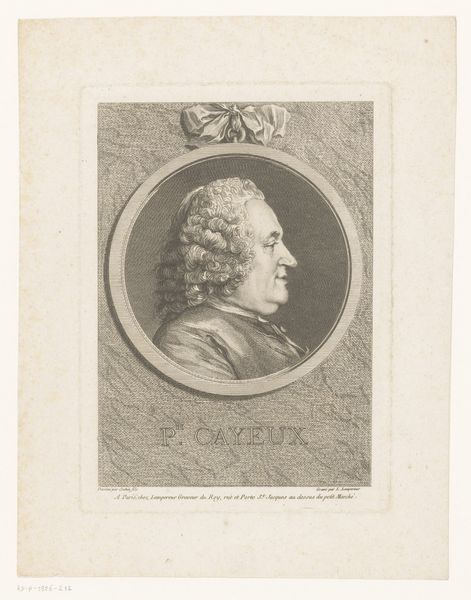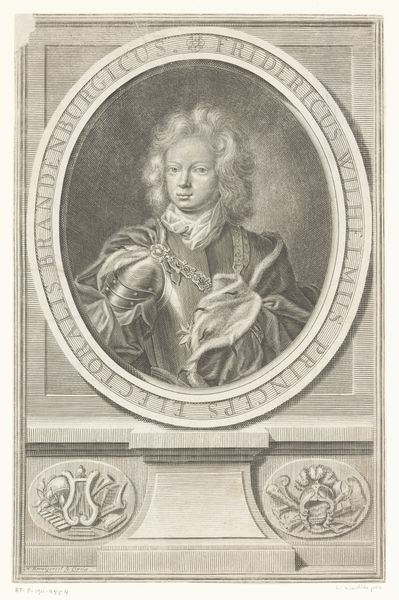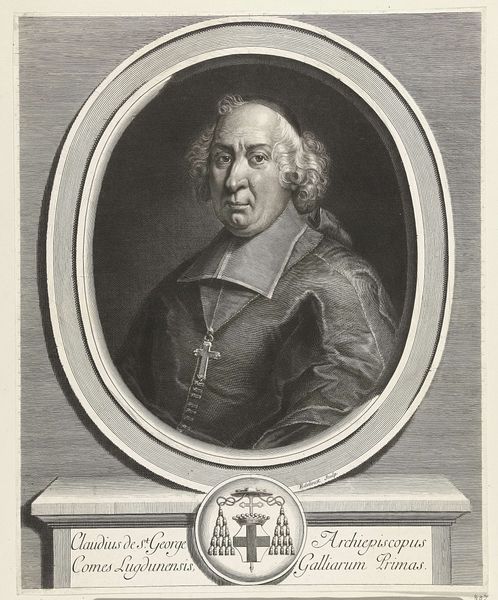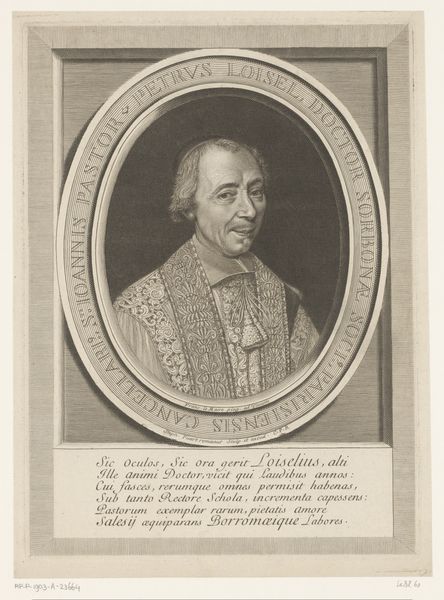
Portret van Claude Alexandre de Villeneuve, Comte de Vence 1754
0:00
0:00
claudehenriwatelet
Rijksmuseum
print, metal, engraving
#
portrait
#
baroque
# print
#
metal
#
old engraving style
#
caricature
#
portrait drawing
#
history-painting
#
engraving
#
rococo
Dimensions: height 175 mm, width 124 mm
Copyright: Rijks Museum: Open Domain
Editor: This is a print of Claude Alexandre de Villeneuve, Comte de Vence, made in 1754. It’s an engraving in metal. It feels very…formal and almost cartoonish to me at the same time. How do you interpret this work? Curator: What strikes me is how this portrait, ostensibly meant to immortalize an aristocrat, also serves as a potent cultural artifact reflecting the power structures of 18th-century France. Consider the very act of creating and circulating this image; it was a means of reinforcing Villeneuve's position within the elite. Note the symbols of power: the framing, the adornments. This isn't just a portrait; it’s a carefully constructed message about status. What kind of role did engravings play in social identity back then? Editor: So, it's not just about likeness but also about projecting a certain image of authority? Like propaganda? Curator: Exactly! And it speaks volumes about how identity, even in art, is often curated for political purposes. We need to consider the viewers and the context: Who consumed these images, and what messages did they take away from them regarding class, power, and perhaps, even resistance? It is important to remember, though, that for every attempt to solidify power, there existed acts of subversion, whether explicit or coded within the art itself. Is it possible that what appears to us as caricature might also be a subtle form of critique? Editor: I hadn't thought of it that way. So, analyzing art like this becomes a way to unpack not just the artist's intention, but also how societal forces shape those intentions? Curator: Precisely! We're not simply looking at a picture, but at a snapshot of a complex, often unjust, historical moment. This challenges us to ask: Whose stories are told, whose are suppressed, and how can we use art history to uncover those silenced voices? Editor: That’s fascinating; it makes you see beyond the surface! Thank you. Curator: My pleasure. Hopefully, it has given you tools for examining power dynamics, and consider intersectional stories in similar historical artworks.
Comments
No comments
Be the first to comment and join the conversation on the ultimate creative platform.

